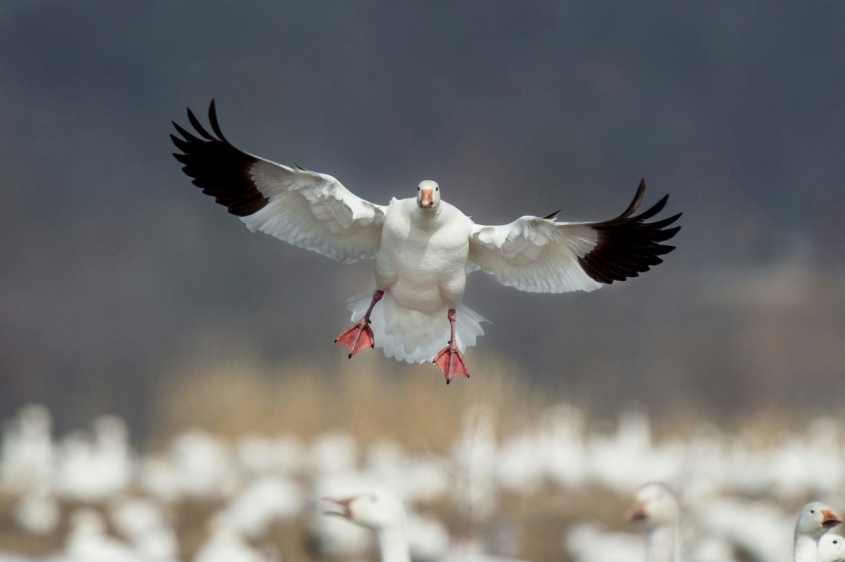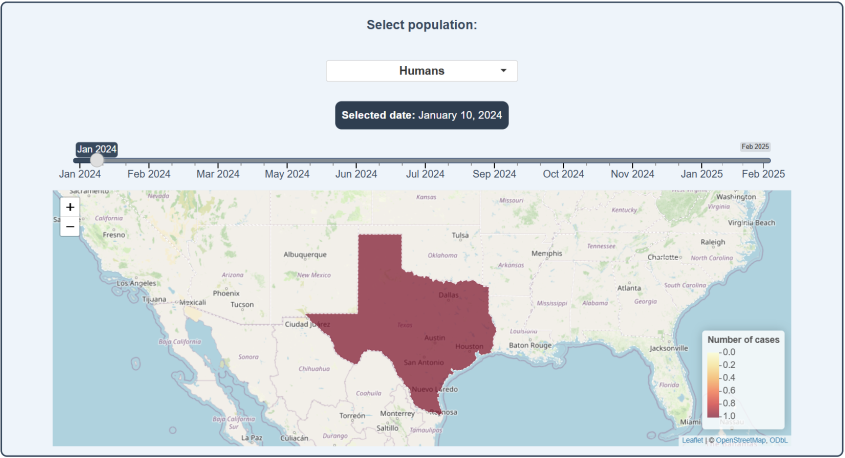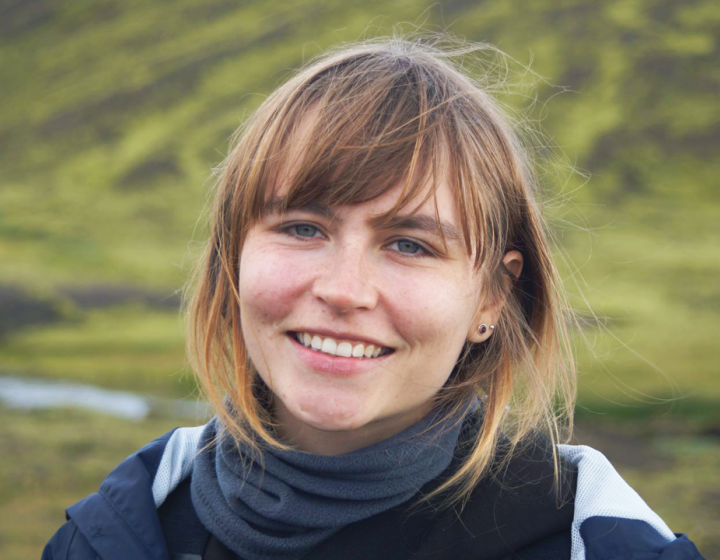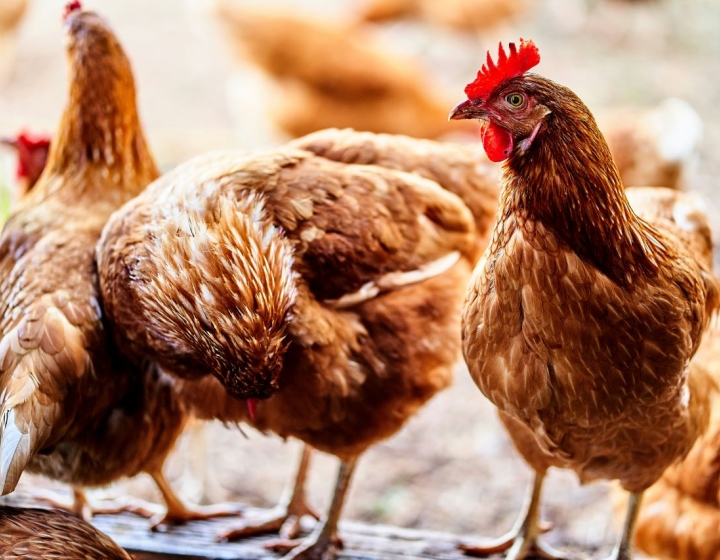Avian Influenza (Bird Flu) Fact Sheet
What is avian influenza?
Avian influenza is an influenza type A virus that occurs naturally in wild aquatic birds, including ducks, geese and gulls. Mild forms of avian influenza (known as low pathogenic avian influenza, or LPAI) are routinely found in wild birds and don’t cause serious illness.
From time to time, a mild strain changes through mutation or mixing with other flu viruses into a more severe type of the virus (highly pathogenic avian influenza, or HPAI). HPAI historically has caused 75-100% mortality in poultry, like chickens and turkeys, as well as some wild birds.
The current outbreak of HPAI has spread into dairy cattle, domestic cats, many species of wildlife and also a small number of people.
How did it get to North America?
The current outbreak in North America began in Nov. 2021, when the virus was introduced – either via trans-Atlantic migration or transmission of the virus in Iceland or Greenland – from Europe, where it had already been circulating for several years. Once in North America, it spread rapidly through both wild birds and poultry, causing significant losses to the poultry industry.
How does an “avian” virus affect so many other species?
Like all viruses, influenza viruses can change over time. Every time an animal or person is infected, small changes in the genetic sequence of the virus occur, and these help the virus avoid getting cleared by the immune system. This leads to a need for new vaccines to help protect us against these changes.
Large genetic changes can also occur when one individual is infected with more than one type of influenza virus and the viruses mix their genetic material. This can result in new forms of the virus that suddenly gain the ability to infect new species.
Who is at risk?
Right now, the risk to humans from the current outbreak of H5N1 is still very low. Since 2024, the Centers for Disease Control (CDC) has reported the number of infections in human cases of HPAI in the United States, and there is no evidence of person-to-person transmission.
Although the risk to the general population is low, the CDC states that individuals who work on farms, or closely with domestic animals or wildlife – whether backyard poultry owners, veterinarians or those with recreational exposures – are at increased risk. Health care providers and emergency responders are also at increased risk due to their potential contact with infected people.
How is it transmitted?
Avian influenza can be transmitted in three ways:
Direct contact
Indirect contact (e.g. contaminated surfaces)
Inhalation
Infected birds (whether showing symptoms or not) can shed the virus in saliva, ocular, nasal or oral secretions, and feces.
The viral particles can also remain suspended in the air and be inhaled (aerosol) or can form droplets that are deposited onto surfaces.
The consumption of raw foods, including raw milk and raw milk products, poses known risks of transmission and should be avoided by domestic cats and people.
Why was the new outbreak in dairy cattle featured so heavily in the news?
Samples from a recent outbreak in dairy cattle in Nevada revealed the existence of two genetic types of HPAI viruses in dairy cattle. The one in Nevada is called genotype D1.1, and is different from the genetic type previously found in cattle in the United States (genotype B3.13).
This finding suggests that the outbreak in Nevada did not result from contact with an infected cow or contaminated farm equipment, but rather resulted from a new introduction into cattle from wild birds.
While this new genetic variation (genotype D1.1) does not in and of itself greatly change the risk to cattle or human health, it shows the risk of new introductions from birds into dairy operations. Repeated new introductions will make controlling the virus in dairy cattle more difficult, and highlights the need for strong testing/surveillance programs and concerted prevention efforts.
Scientists used genomic sequencing on the samples from Nevada. Genomic sequencing refers to a process that can determine the entire genetic makeup of an organism.
Where can I go to learn more?
If you are interested in how H5N1 affects people or specific animals, and want to learn about the research we do, navigate to our resource center landing page and click through the various tiles for further information.
- If you are interested in genomic and protein data, regarding the H5N1 outbreak, navigate to the Bacterial and Viral Bioinformatics Resource Center’s HPAI website, which provides weekly phylogenetic updates on changes in the virus.
This page was last updated on Wednesday, Mar 12, 2025






